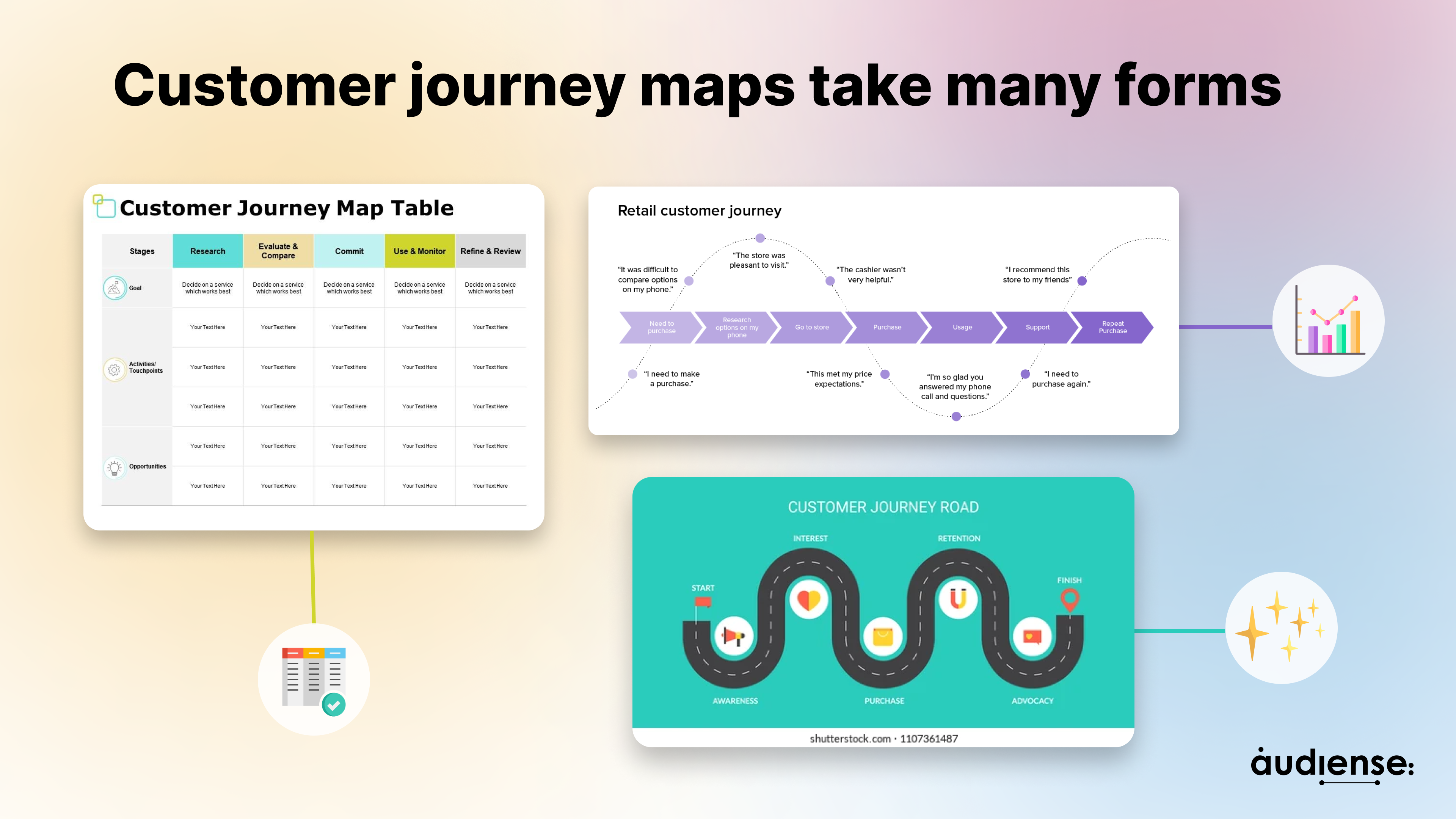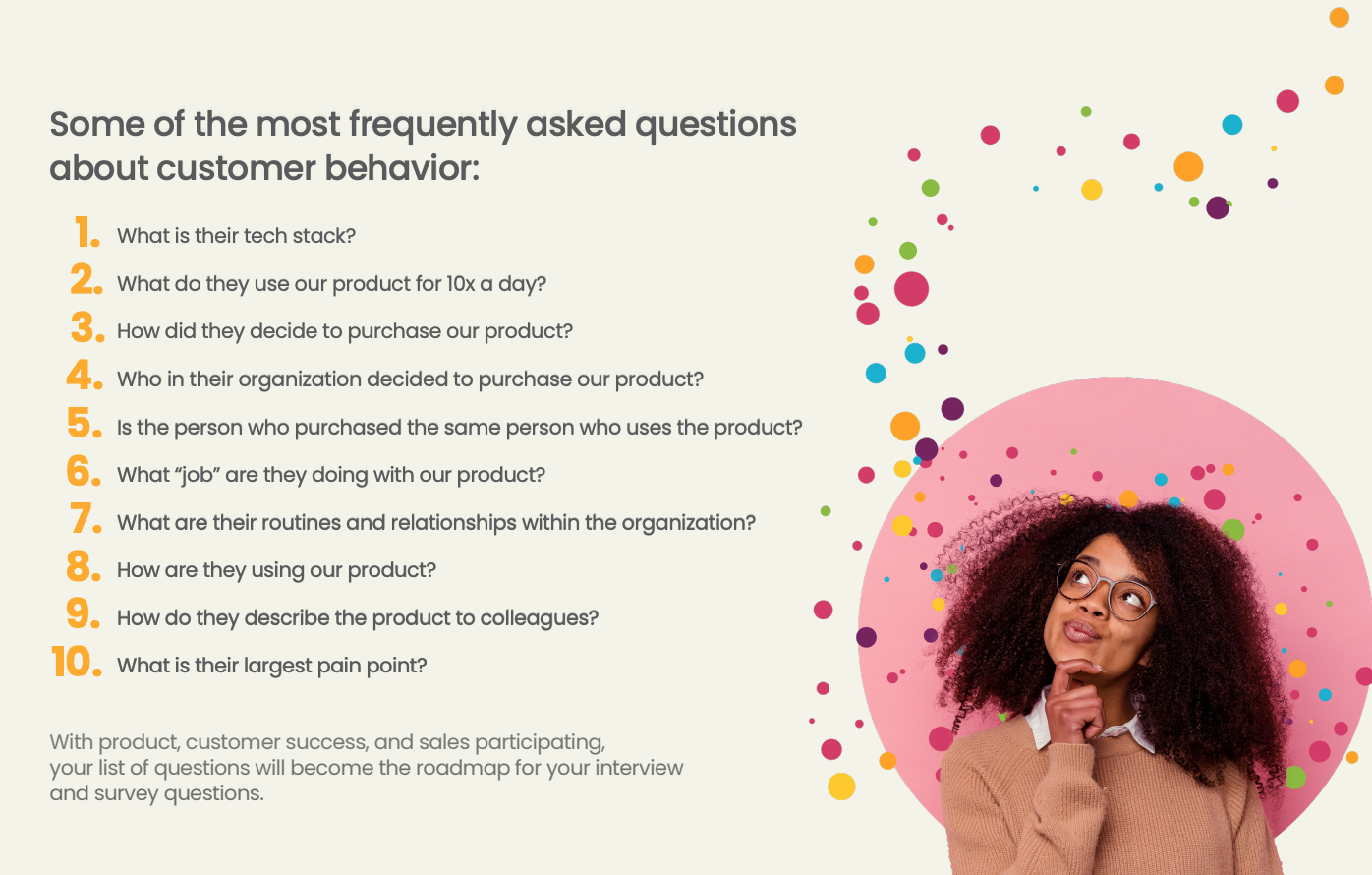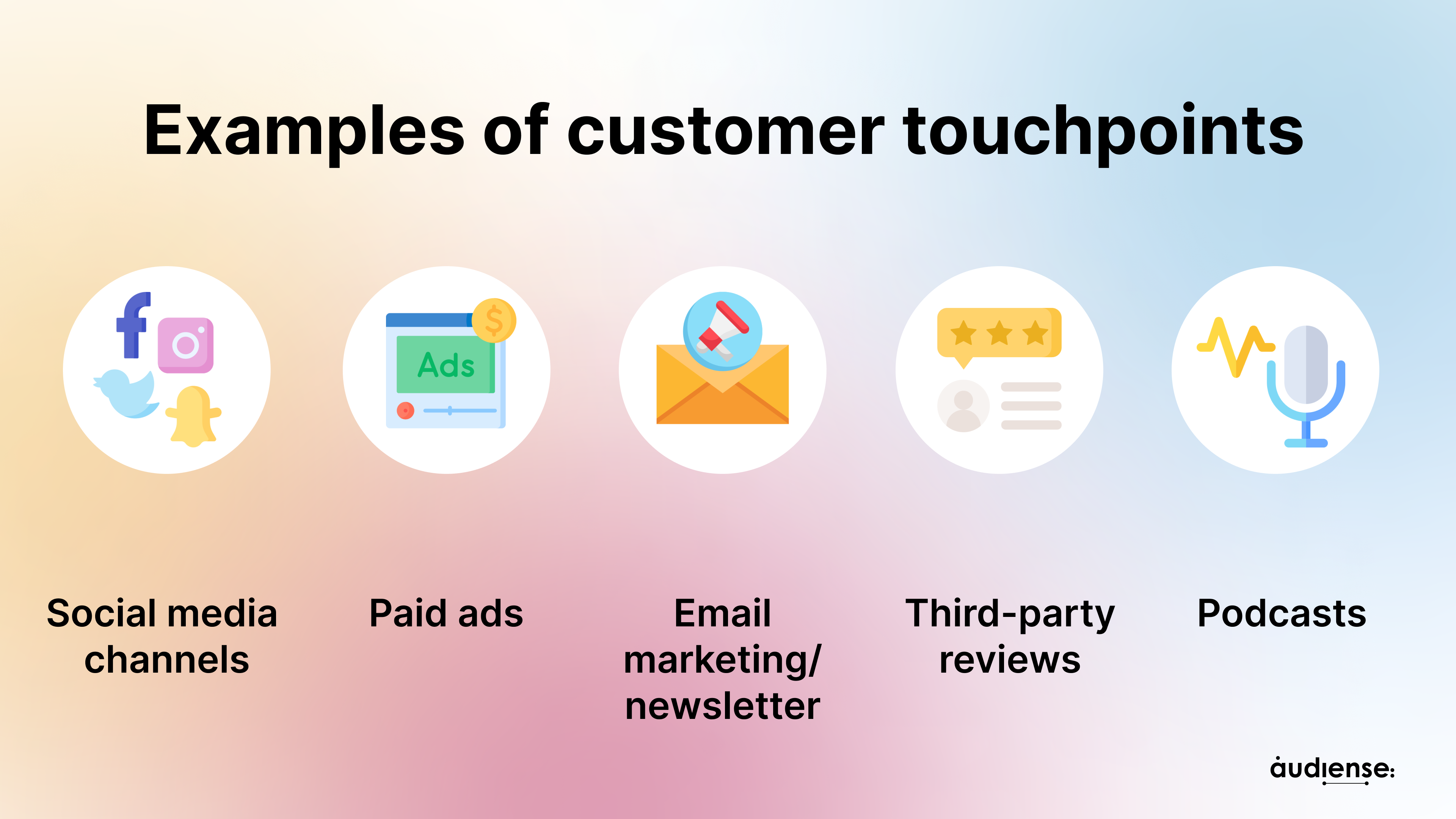How to build customer journey maps that are actually useful
Customer journey mapping is the process of visually mapping out the steps your customers go through when engaging with your company. A journey map documents the process of buying your product or service.
Your customer journey map can take the form of a diagram, table, or fancy graphic—but what matters most is that it's useful. You can use a journey map to identify opportunities for improvement or upselling, new products or services, and more.

Before committing resources to build a customer journey map, you should understand how it will benefit your business.
Benefits of creating a customer journey map
Think of a customer journey map as a visual representation of your customer's path as they discover, consider, and ultimately buy your product or service. It’s a useful tool for understanding how you can improve the experience for customers.
By mapping out this journey, you can see where there are gaps in the process—gaps that might be causing frustration or confusion among users. You can also discover where people drop off before reaching their end goal, which helps you identify areas where you can improve navigation or develop more engaging content.
How to get started with a customer journey map
The first step in building your customer journey map is defining what you want from it:
- Are you trying to improve the quality of your service?
- Are you trying to increase revenue?
- Do you want to identify gaps in the customer experience?
Once your map has a goal, you need to dive into your audience data and develop customer personas.
What is a customer persona?
Before you create a journey map, you need to know who your target audience is.
Start with creating a customer persona, which is a representation of your customer data. If you’re starting from scratch, don’t sweat it! We have a persona creation manual and a masterclass to help you out. If you already have a customer persona, revisit yours and make sure it’s updated.
 A sneak peek at our step-by-step buyer persona manual.
A sneak peek at our step-by-step buyer persona manual.
By analyzing your target audience, you can craft a fictional persona to represent your real customers, and this includes their wants, needs, and pain points.
Why do I need a customer persona?
Customer personas help you answer questions like "Who are my customers?" or "What do they want from me?" They allow you to see things from the perspective of your ideal customers, and this information helps you make educated decisions about marketing campaigns or product development.
The biggest mistake people make when creating personas is basing them on assumptions rather than data. That’s why it’s important to collaborate outside your marketing team when creating personas.
How to validate your customer persona
The best way to validate your customer persona is by collaborating with customer-facing teams—or, preferably, talking with customers themselves.
The best ways to do this are:
- Asking your sales team to let you watch sales call recordings
- Asking your customer success team to introduce you to customers to interview
- Interviewing customer-facing teams (sales, customer success, support, etc.) to get their perspectives
Top tip: Make sure you don’t ask leading questions when talking to customers or other internal teams. You want to capture authentic thoughts that aren’t influenced by your assumptions.
Now that your customer personas are updated and validated, take that knowledge and start your customer journey map.
How to map customer touchpoints
When creating your customer journey map, you want to list every interaction between your customer and your brand. This includes all marketing channels, not just your website. These touchpoints also include:
- Social media channels
- Paid ads
- Email marketing or newsletter
- Third-party reviews
- Podcasts

This is a pure information-collecting phase. No matter how big or small an interaction may seem, it’s important to mark down everything.
You’ll want to then figure out the actions customers take at each of these touchpoints so you can identify where you can reduce the number of actions a customer has to take to convert.
Now you want to take each touchpoint and assign a corresponding:
- Action
- Thought
- Pain point
- Emotion
Once you’ve gathered all this information, you need to decide which parts to include on the map itself. Here are some real-world examples for inspiration:
Example: Spotify Customer journey map “Music Sharing Experience”
Spotify includes the thoughts, emotions, and steps along with the touchpoints for a specific use case for their app (sharing a song).
Example: Starbucks customer journey map
Starbucks simplifies its customer journey map by focusing on the experiences at each touchpoint. They divide the experiences into two sections (positive and negative), separated by the neutral baseline.
Example: Amazon Customer Journey Framework
This simplified version of Amazon’s customer journey includes metrics for each stage of the customer journey.
These few real-world examples show that a customer journey map can take various forms based on what you want to focus on.
Best practices for customer journey maps
Creating an accurate customer journey map can take a lot of time and resources, so you want to make sure you’re accurately reflecting your customer's experiences. Follow these best practices to ensure you use your time and resources well.
1. Focus on real customer pain points
The biggest mistake people make is assuming they know customer pain points—This is why directly interviewing customers or watching sales calls is important when researching. Don’t just assume a customer’s pain points—hear it from them.
2. Go beyond the touchpoints and actions
It’s important to go beyond the marketing funnel and get to the core of why customers take action. Dig into the thoughts and emotions behind a customer's action. Your customers exist outside your company’s bubble. They exist in the world.
3. Collaborate with other departments
If you create your customer journey map without collaborating with other teams, it won’t be useful. Enlisting the help of sales or customer service reps is key to an accurate and useful customer journey map.
4. Edit, iterate, refresh
Don’t let your customer journey map collect dust. Depending on your organization, you should plan to update your map anywhere from quarterly to every few years.
You should revisit your customer journey map:
- After every major product release
- When your product or service changes
- When your customer's buying journey changes
Sometimes the smallest change can become a pain point for your customers. Don’t miss out on sales because of it.
Key takeaways
No matter what form your customer journey map takes audiense research should be at its core.
Let’s recap what we’ve learned about both customer journey mapping and personas:
- Customer journey maps are a valuable tool for understanding how you can improve the experience for your customers.
- Before creating your customer journey map, you should understand your customer and build customer personas.
- Make sure real customer experiences validate your customer personas by interviewing customers themselves, watching sales calls, and interviewing your customer-facing internal teams.
- Understanding the goal of your customer journey map is key to figuring out what information to include.
- Go beyond the marketing funnel. It’s important to get to the core of why customers take action.
- Don’t forget to revisit your customer journey map when your customer’s buying journey changes.
At its core, a customer journey map is a tool to understand your customers to serve them better. The more customer research you put in, the more accurate your personas and journey maps will be allowing you to be there for your customers.
Learn more about how Audiense can help you build out personas with audience data.






